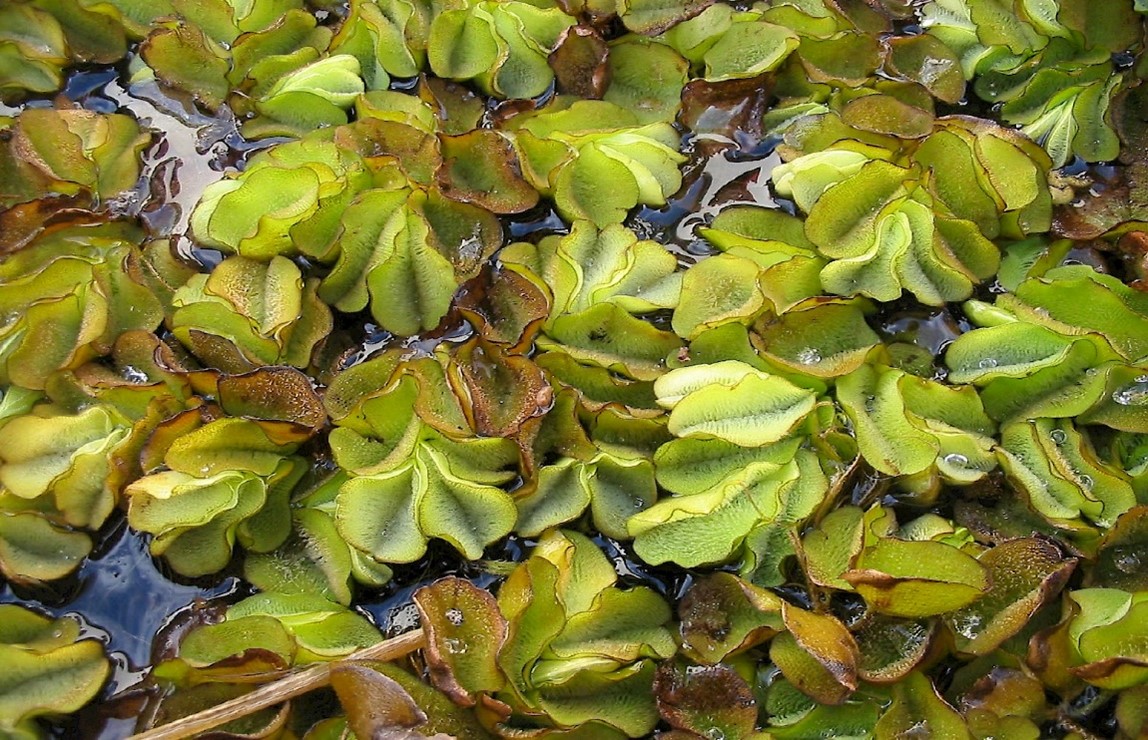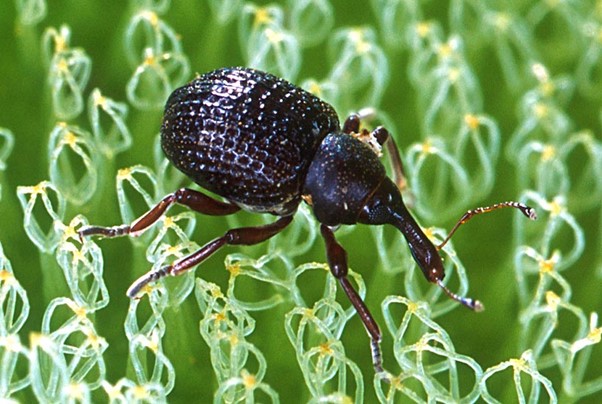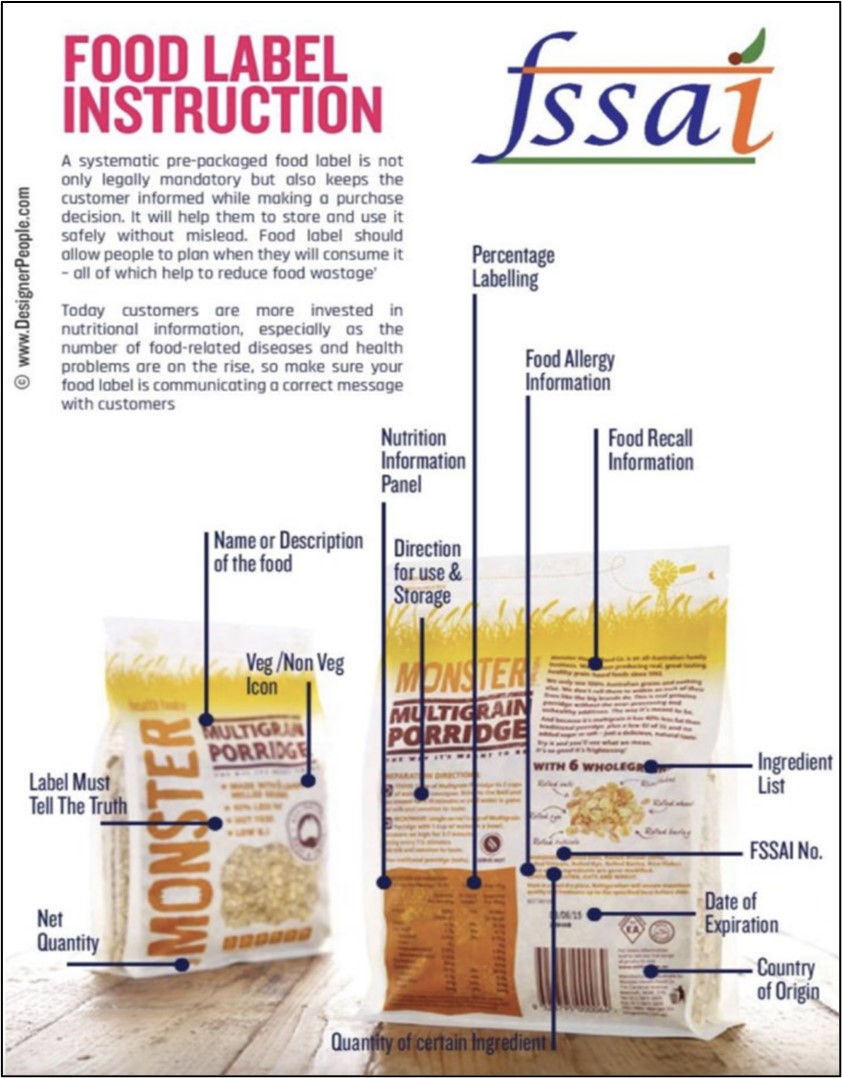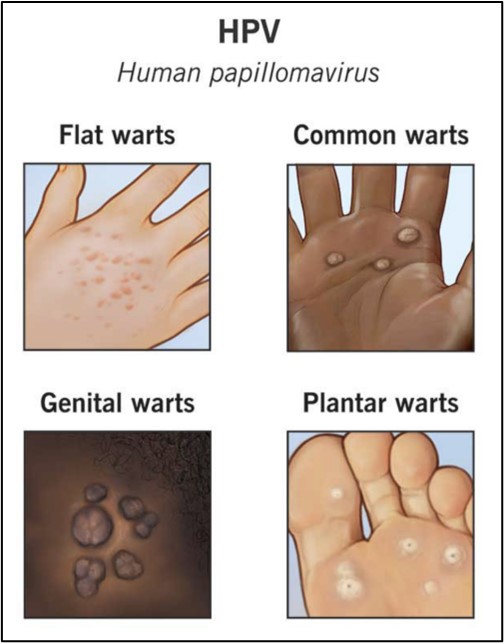Salvinia molesta
An exotic beetle, Cyrtobagous salviniae released into a reservoir built on the Tawa river in Madhya Pradesh has successfully eradicated an invasive weed species, Salvinia molesta recently.
- Common name- Giant salvinia.
- It is an invasive aquatic fern that floats on the surface of the water.
- Salvinia molesta is named after Antonio Maria Salvini, an Italian naturalist.
- It is locally known as “Chinese Jhalaar” which was first spotted in India in 2018 and had completely carpeted the reservoir by 2019.

- Appearance- Salvinia molesta consists of floating leaves and submerged root-like structures.
- The floating leaves are oval to oblong, measuring about 2-5 cm in length.
- Habitat- It thrives in slow-moving, nutrient-rich freshwater bodies like ponds, lakes, rivers, and irrigation channels.
- Distribution
- Native Range- Southeastern Brazil.
- Invasive Range- It has spread to many parts of the world, including North America, Europe, Asia, Africa, and Australia.
- Reproduction- It has a very high rate of reproduction. It reproduces vegetatively through fragmentation.
- Environmental Impact- Dense mats of Salvinia molesta block sunlight, reducing oxygen levels in the water and harming aquatic life.
- They can also disrupt native plant communities and alter habitats.
Cyrtobagous salviniae
- The salvinia weevil, Cyrtobagous salviniae is a subaquatic (underwater) herbivorous insect.
- Native - Brazil.
- This insect feeds on the invasive aquatic plants Salvinia molesta and Salvinia minima (Baker).
- These insects can breathe underwater through an air bubble (called a plastron) that they create and attach to the underside of their body.
- This insect is an effective classical biological control agent used in several countries to control the invasive giant salvinia, Salvinia molesta.

|
Tawa River
|
- Tawa River is a river located in the central part of India, primarily in the state of Madhya Pradesh.
- Location-The Tawa River originates in the Satpura Range of Madhya Pradesh.
- Tributary- It is a significant tributary of the Narmada River, one of the major rivers in India.
- The Tawa River begins in the Satpura Range, which is known for its lush greenery and dense forests.
- Flora and Fauna- The river and its surrounding areas support a rich variety of wildlife and plant species.
- The Satpura Range, through which the river flows, is home to numerous species of birds, animals, and plants.
- Significance-The Tawa River is crucial for irrigation in the region, supporting agriculture in the fertile plains of Hoshangabad and nearby areas.
|
Reference
- Down to Earth | Salvinia molesta
Talacauvery Wildlife Sanctuary
The National Green Tribunal (NGT) principal bench has taken suo moto cognizance of alleged tree felling and burning near Talacauvery Wildlife Sanctuary.
Tree felling and burning indicate a violation of the provisions of the Environment Protection Act, of 1986, and the Forest (Conservation) Act, of 1980.
- Location - It is a wildlife sanctuary in Karnataka.
- It is also known as the Greater Talacauvery National Park and was declared a sanctuary in 1987.
- It is located in the Brahmagiri hills, which is part of the Western Ghats, a UNESCO World Heritage site.
- Border - It borders Ranipuram Hills and Kottencheri Hills in the Kasaragod district of Kerala.
- Geography – It is characterized by dense evergreen forests that have largely remained untouched.
- Flora - Key plant species include rosewood, teak, and laurels.
- Fauna - Elephants, tigers, leopards, Indian bison (gaur), wild boar, Malabar giant squirrels, and sambar deer, Great Indian hornbill, Malabar trogon, and various species of woodpeckers, flycatchers, and thrushes.
- Cultural significance - The sanctuary is home to the Talakaveri temple, an important pilgrimage site where the Kaveri river is believed to originate.
|
River Kaveri
|
- Origin - The Kaveri River originates at Talakaveri in the Western Ghats in Kodagu district, Karnataka.
- Flow - It flows southeast for about 800 kilometers through the states of Karnataka and Tamil Nadu before emptying into the Bay of Bengal.
- Tributaries
- Left Bank - Harangi, Hemavati, Shimsha, Arkavati.
- Right Bank - Lakshmana Tirtha, Kabini, Bhavani, Noyyal, Amaravati.
- Dams and Reservoirs - Krishna Raja Sagara (KRS) Dam and Mettur Dam.
- Interstate Water Dispute - The Kaveri water dispute between Karnataka and Tamil Nadu has been one of India's most contentious interstate water disputes.
|
Reference
The Hindu | Talacauvery Wildlife Sanctuary
New Food Packaging Rules
Recently, The FSSAI approved an amendment to the Food Safety and Standards (Labelling and Display) Regulations, 2020, concerning nutritional information labeling during its 44th meeting.
- New rules on Nutritional information - It has mandated the display of nutritional information on total sugar, salt, and saturated fat in bold letters and larger font sizes.
- Aim of the new rules - The proposed amendments aims to empower consumers to better understand the nutritional value of the products they consume, promoting healthier decisions.
As per the FSSAI, regulations 2 (v) and 5(3) of the FSS (labeling and display) regulation, 2020, specify requirements to mention serving size and nutritional information on the food product label, respectively.
- e-commerce - FSSAI advised e-commerce sites to remove the term "health drink" and directed food businesses to stop labeling and advertising reconstituted fruit juices as "100% fruit juice."
- Governing body - In India, the Food Safety and Standards Authority of India (FSSAI) serves as the authority that mandates food labeling standards.

- Penalty on noncompliance - Any unintentional breach of FSSAI food labeling standards and failure to secure a Food Business license may lead to consequences such as fines, penalties, product recalls, or delays in product launches.
References
1. Business Standard | FSSAI rules
2. PIB | 44th meeting of FSSAI
Human Papilloma Virus (HPV)
India's public health sphere recently saw a one-sided discussion on how HPV vaccination prevents cervical cancer and reduces related deaths.
- It is a viral infection.
- There are more than 100 varieties of human papillomavirus (HPV).
- Some types of human papillomavirus (HPV) infection cause skin or mucous membrane growths (warts) and some can cause different types of cancer.

- Most HPV infections don't lead to cancer. But some types of genital HPV can cause cancer of the lower part of the uterus that connects to the vagina (cervix).
- Other types of cancers, including cancers of the anus, penis, vagina, vulva, and back of the throat (oropharyngeal), have been linked to HPV infection.
- Symptoms of HPV - it includes Genital warts, Common warts, Plantar warts, Flat warts.
- Transmission of HPV - These infections are often transmitted sexually or through other skin-to-skin contact.
- Vaccine - Vaccines can help protect against the strains of HPV most likely to cause genital warts or cervical cancer.
- Gardasil 9 is an HPV vaccine approved by the U.S. Food and Drug Administration and can be used for males and females to protect against cervical cancer and genital warts.
|
Quick fact
|
- Cervical cancer - Nearly all cervical cancers are caused by HPV infections, but cervical cancer may take 20 years or longer to develop after an HPV infection.
- Cervical cancer doesn't cause symptoms.
- Getting vaccinated against HPV infection is your best protection from cervical cancer.
- The Serum Institute of India (SII) has developed ‘Cervavac’.
- It is a vaccine against cervical cancer.
- It uses similar techniques, deploying virus-like particles (VLPs) produced using recombinant deoxyribose nucleic acid (rDNA) techniques to generate an immune response against HPV infections.
- It is only the second rDNA vaccine in the world using the techniques of the early 1970s, the first being the vaccine against Hepatitis-B.
|
References
1. The Hindu | Indigenous HPV vaccine
2. Mayo Clinic | HPV infection



